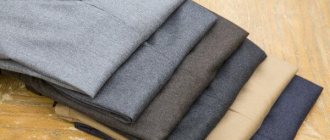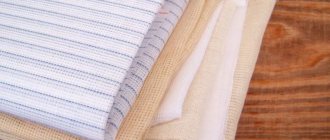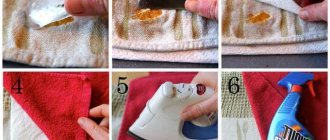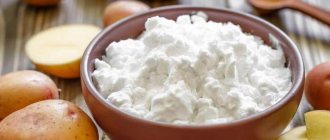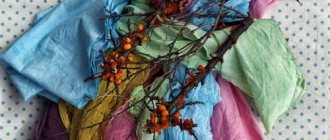Every housewife keeps order in her home. She is always clean. She washes and irons all things. A real housewife does not forget to starch her laundry. In this article we will look at why this is necessary. We will also learn how to starch things correctly. Namely, we will focus on how to starch tulle. Let's find out the answers.
Today, starch is rarely used in caring for things. But before, every person had starched collars. In the house, all the women had starched curtains and bed linen. Why was this so important? And should we forget such traditions of the past?
How to starch curtains
There are several ways to starch tulle fabric.
You can do this by hand or in a washing machine; prepare a rare, medium or thick solution; give the curtains shape using starch or other means. Depending on the density of the solution, the following processing methods are distinguished:
- Soft method (a teaspoon of starch per liter of water) for curtains and tulle.
- Medium (tablespoon per 1 liter) for lace, napkins, shirts, aprons.
- Hard (2 tablespoons per liter of water) for collars and cuffs.
For curtains and curtains, a soft method is used. It protects the fabric and gives it a fresh look without making the fibers stiff. For the procedure, you can use processed products from rice, wheat, and corn. But the most popular is potato starch. It is affordable, viscous, thickens quickly and effectively whitens fabric. If the starch has a grayish tint, it should be washed well, drained and allowed to dry.
Soft finishing stages
The procedure involves soaking clean dry or wet tulle in a starch solution. To do this you need to follow these steps:
- dissolve 5 teaspoons of starch in 200 ml of cold water;
- stir thoroughly;
- Heat 5 liters of water in a separate container;
- Stirring constantly, pour in the resulting starch solution in a thin stream;
- cook over low heat until a clear paste forms;
- turn off the fire;
- strain through a sieve or cheesecloth to avoid lumps;
- if the liquid is cloudy, boil for 5 minutes;
- if the curtain needs to be given shine, add a spoonful of salt or sugar;
- cool the solution to room temperature;
- pour the liquid into a basin or bucket;
- immerse clean tulle in the solution for half an hour;
- remove the fabric and let the water drain.
Remember that it is not recommended to wring the tulle too hard. If corn starch is used, the solution must be boiled. To give light curtains a “frosty freshness,” add a little blue to the finishing liquid.
Starching in the washing machine
You can finish curtains not only by hand. To do this, paste or dry starch is dissolved in water in the required proportion and poured into the conditioner compartment. Then the machine turns on to standard mode. After stopping, you can pull out the curtain and dry it.
Method without soaking
This recipe is suitable not only for tulle, but also for colored fabrics. The main condition is to process dry material. In a liter of warm water you need to dissolve a quarter teaspoon of starch. The paste is boiled for 7 minutes and cooled. The resulting liquid should be poured into a spray bottle and applied to dry and clean curtains. If desired, the tulle can be ironed after spraying.
Selection of tools and materials
Prepare from this list:
- Well sharpened scissors.
- Measuring tape.
- The container in which you will prepare the adhesive.
- Wide brush.
- Pencil, ruler and thick paper.
Before gluing tulle to a window using starch, you need to decide on a material that is suitable for these purposes.
The only materials you will need are:
- Lace material or ready-made tulle.
- Corn or potato starch.
It is better to take a new piece with light patterns. Heavy fabrics will not work. They won't last long on eco-glue.
The classic way to starch napkins
Needlewomen knit openwork products, flowers, figures of animals and birds, but at the same time they do not know how to starch a napkin, giving it an aesthetic appearance
Before starching crocheted napkins, you should pay attention to the thickness of the threads from which the product is made
When the product is made of thin threads, it is dipped in a starch solution for 5-7 minutes. With medium thickness threads, the material is kept in solution for up to 10 minutes, and with thick threads, soaking lasts 15 minutes.
The solution is prepared from water and starch. Any starch (rice, potato, corn) is suitable for these purposes.
Preparation of the solution
If the napkin needs to be given a very rigid shape, then use 2 tbsp per 1 liter of water. l. substances. For a softer starch, take 1 tsp. powder per 1 liter of water. For the classic method (medium hardness), use 1 tbsp per 1 liter of water. l. starch.
Preparing the solution is not a complicated procedure, but requires compliance with some rules:
- Starch is diluted with a small amount (1-2 tablespoons) of water at room temperature. The mass is mixed well until it has a homogeneous consistency. If you use hot water to dilute the powder, it will not dissolve, but will clump. You will not be able to starch products with this solution.
- The remaining volume of water (1 liter without 1-2 tablespoons) is brought to a boil.
- The dissolved starch mass is poured into hot water. The mass is thoroughly mixed and boiled over low heat for 5 minutes. The solution should be free of lumps and cloudy in color.
Starching algorithm
How to starch napkins correctly to get a beautiful, evenly starched product:
- The finished solution is cooled to a temperature slightly above room temperature.
- The product is placed in a starch mass.
- You should wait a certain time (5-15 minutes), depending on the thickness of the napkin threads. At this time, the product is soaked in starch.
- Manually spin the product.
- A clean white towel or diaper is laid out on a flat and flat surface, on which a damp, starched napkin is placed.
- The product on the surface is straightened out as it should be after drying (smooth, with waves along the edges).
- To avoid the napkin moving during the drying process and losing its desired shape, it can be secured to the surface with needles or pins.
To give the napkin certain properties, additional ingredients are added to the classic starch solution.
Additives table
| Additive | Quantity | Result |
| Milk. Only rice starch is used | 500 ml | Gives the fabric a matte effect. In this case, the spin is carried out slightly |
| Salt | 0.5 tsp. | Gives the product shine |
Examples of lace windows
Glass covered with openwork fabric has its own unusual flavor. They radiate warmth and comfort. Beautiful patterns decorate the glass not only from the inside, but also from the outside. At the same time, the material transmits light well inside. But at the same time it protects from overly aggressive rays of the sun and the curious glances of passers-by. For those who want to try to put an unusual idea into practice, photos of lace windows will help. They show how interesting and unusual the romantic patterned decor looks.
If you decorate the glass with tulle, not only the window will be transformed. The entire interior of the room will be different. Designers advise combining the openwork on the glass with other objects in the interior. For example, you can duplicate the openwork inserts on the buffet doors or cover the table with a patterned tablecloth. You can also sew pillows from guipure or cover the frame of a floor lamp. It all depends on the style of the room and the creative imagination of its owners.
What product is best for starching things?
The paste is made from potato or corn starch. The choice of the type of food product for processing bed linen is not of fundamental importance.
Traditionally potato starch is used. It is easy to use, brews well with boiling water, thickens quickly, and is snow-white, sometimes with a pale blue tint. The only drawback of potato starch is that if used incorrectly, the solution can give the fabric a yellowish tint.
Corn starch copes with the task no worse than potato starch, without leaving yellow stains on the laundry. However, to prepare a high-quality paste, it must be boiled for 5-7 minutes.
Rice and wheat starch are more expensive, plus they are unusual for residents of the post-Soviet space. Such products are usually not used for starching things.
If you don’t want to prepare the solution yourself, you can get by with synthetic starches. Preparations for this purpose are sold in household chemical departments and are presented in a wide range in the form of liquid rinses, sprays, and aerosols. Liquids with a starching effect are added when rinsing things, aerosols and sprays are used before or during ironing according to the instructions.
Drawing conclusions from the above, it is not difficult to understand that starching bed linen is not at all difficult. This takes little time, the means used are accessible and inexpensive. But the benefits that come from treating things with starch are worth the effort.
How to brew starch? Video tip:
How to iron starched tulle
Before ironing the curtains, they must be properly wrung out and dried a little. In order not to damage the delicate tulle, it is better not to twist it, but simply remove it from the water, squeeze it lightly and let the water drain. After this, the fabric is shaken and hung to dry. Carefully straighten out all creases and folds. It is better to dry tulle in a well-ventilated room. Make sure that undried starch curtains are not exposed to frost, near a radiator, or in direct sunlight.
It is better to iron slightly under-dried curtains. Some housewives do not heat treat tulle because they are afraid of damaging the delicate fabric. They simply hang the curtains on the curtains, straighten them and let them dry like that. Indeed, if the iron is too hot, the tulle may melt or turn yellow. And if the curtains have not been wrung out, then after drying on the curtain they will be smooth and even.
But if the fabric has been wrung out and it is impossible to smooth out the creases, it is better to use an iron. Set it to moderately hot, no more than 120 degrees. Wrap the tulle fabric in cotton and iron it. The curtains should be slightly damp. If the finished material is dry, it is almost impossible to iron it. Do not use steam as this will cause the starch to lose its properties. Cotton cloth or gauze will prevent the iron from sticking to the tulle. A pinch of salt added to the starch solution helps reduce soot. For these purposes, you can also use a few drops of turpentine.
https://youtube.com/watch?v=TUhzjYbFZH0
If synthetic curtains have turned gray or yellowed, you can dye them a subtle color. This is easy to do even at home, just purchase a special dye.
By following these instructions exactly, you will get beautiful, fresh and clean tulle. If for some reason you were unable to starch the curtains or you are not happy with the result, simply wash the tulle again.
Source
Recommendations for drying and ironing
[blok_5_h2]
To ensure that the final result of your efforts is pleasing to the eye, it is important to properly dry and iron starched items. Basic recommendations:
- Products must be dried in a ventilated area. It is advisable not to place them in direct sunlight, on heating devices or in frost.
- It is better to dry shirts, dresses and bed linen in an upright position on hangers and lines, respectively. They should not be pressed too hard to prevent creases from forming.
- Openwork napkins and lace should be dried horizontally on a terry towel. They need to be well straightened, aligning all the elements, and pin the edges with pins. You can also use hoops and wooden frames.
- It is advisable to iron the products in a slightly damp state with a warm iron without steam, placing a thin cotton cloth or gauze on top to avoid sticking. Items with embroidery must be ironed from the inside out. Dried clothes are almost impossible to iron.
Starching textiles is an affordable way to make them look fresher and more attractive. It is important to choose the correct solution concentration depending on the type of fabric, level the wet product and iron it in time before it is completely dry. Dark wardrobe items, synthetics and underwear should not be subjected to this treatment. If you don’t like the effect of starching, just wash the item.
How to iron tulle without an iron?
If you don’t have an iron, or unforeseen circumstances arise, there is another option. How to iron tulle without an iron?
- Using a steam generator. To iron the fabric using this method, it must be hung along its entire length, eliminating any unevenness. It is necessary to treat the entire area of the canvas with a steam generator, and if necessary, more than once. To do this, simply move the nozzle at a distance of 0.5-1.5 cm from the curtain. You can straighten curtains while hanging using any steam generator with a vertical operating mode.
- Using a spray bottle. For the second method we need a spray bottle. The washed fabric is hung on the cornice, under the influence of its weight it straightens, unevenness is smoothed out, and wrinkles are eliminated. Your task is to monitor the quality of the material, spray it with water from a spray bottle if external defects remain. Any handheld spray bottle will work for this method.
- Using boiling water. To do this, hang the canvas over a bathtub, which is 1/3 filled with hot water and leave overnight. Boiling water will smooth out all the unevenness on your curtain.
Window decoration with tulle
Lace windows are tulle glued to glass using starch. This design has many advantages:
- Ease of execution. Even a child can cope with such work.
- Minimum set of tools. Scissors, a measuring tape and a ruler are all you need to decorate the glass.
- Economical. There is no need to buy additional curtains, curtains and lambrequins. Any lace cut that is in stock will be suitable for the design. The main thing is that there are no defects or frayed edges.
- Beautiful decorative effect. Intricate patterns make the interior elegant. When light passes through the patterned translucent texture, beautiful openwork highlights appear on the walls.
The degree of transparency of the glass depends on the density of the selected tulle
Another plus is that you don’t need special cornices, frames or baguettes for decoration. And the result will definitely please all lovers of openwork motifs.
Basic rules for starching tulle
Whether tulle starches well or poorly depends on the solution used during the manipulation. The main ingredients of a high-quality starch solution are:
- water;
- starch.
Starch is made from rice, potatoes, corn and wheat. The properties of starch are the same, but the shade is different. For example, if the substance is taken from potatoes, the color is white with blue. This substance thickens quickly, which cannot be said about corn starch.
Before treating things with starch, they must be washed and then rinsed. If you starch dirty tulle, the film will seal the dirt and it will become visible to everyone. It is difficult to wash it afterwards. Clean material is placed in a solution with starch. At the same time, it should not be wet, but moist. Dry curtains can also be starched.
Why starch textiles, and when should you not do it?
[blok_1_h2]
In the process of starching the fabric, its fibers are impregnated with polysaccharides. A thin film is formed on the surface of the threads, which increases their density and elasticity. As a result of starching, textiles hold their given shape well, bleach, crumple less and “creak” when touched. In addition, products stay clean longer and are easier to wash, since the starch film repels dirt and does not allow it to penetrate deeply into the fibers.
The disadvantage of starching is the fact that it reduces the breathability of the fabric. It is not recommended to process:
- summer clothes (it is advisable to starch only individual parts);
- underwear (they may become stiff and cause discomfort);
- dark products (starch can change their shade);
- synthetic fabrics (the solution is not fixed to their fibers);
- things embroidered with floss threads (they can stick together and lose their shine).
Important: Only clean things are starched. If there are stains on the product, they must first be removed.
How to properly starch tulle at home.
In the world of ideals, there are three ways to starch at home: soft, medium and hard. The tulle is softly starched. To do this, you must follow the following instructions. Take two tablespoons of starch and mix with cold water. Next, add warm water to the resulting solution and heat until a colorless sticky mass is obtained. Remember to stir the paste to avoid lumps. Then you need to add cold water and mix vigorously. Immerse the tulle in the resulting solution for thirty minutes. After squeezing, dry slightly and smooth out the still wet tulle.
Items treated with starch are always slightly different from simply washed items. Consequently, the smoothing process for these items becomes more accurate. When working with an iron, try to follow several rules:
Slightly damp starched items are easier to iron, so it is recommended to iron them only when damp. Products after starching must be ironed on both sides, starting from the inside out. Therefore, the iron should be heated to about 120-140 degrees Celsius. Starched fabric loses its beneficial qualities due to water, which means that steam should not be used when ironing.
Preparation of glue from starch
The tulle will stick thanks to a synthetic adhesive. Now there are a lot of means for gluing. But unnatural liquid also has disadvantages:
- Due to ultraviolet radiation, the glue can turn yellow.
- In hot weather, the room may have an unpleasant odor.
- If you want to re-glue the old tulle, this will be problematic.
Starch should be of high whiteness.
Then the composition prepared from it will not turn yellow over time and spoil the appearance of the decor. Therefore, people prefer natural glue, which can be made inexpensively at home from natural corn or potato starch.
Starch glue quickly deteriorates, so it is necessary to prepare the composition on the day of gluing.
Corn
In order to prepare corn glue, you need:
- hot water - 350 milliliters.
- cold water – 2 tablespoons.
- corn starch - 2 tablespoons.
- spatula (preferably made of wood).
- mixing bowl.
While performing work, you must wear household or medical gloves.
This will help protect the skin of your hands from contact with the viscous liquid. Step-by-step instruction:
- Mix the starch with the cold liquid and stir the mixture well. A spatula will help break up any lumps so that the mixture becomes homogeneous.
- Add hot water little by little.
- Stir until the consistency is the same.
- The glue can be used after it has completely cooled.
The solution should not be too thick or thin. It is necessary to achieve a medium thick consistency.
Potato
The process of making potato glue is slightly different from the previous one. Needed:
- Warm water – 3 liters.
- Potato starch - 1 tablespoon.
- Mixing vessel.
- Spatula.
When the adhesive solution is ready, you can begin decorating the glass.
Cooking method:
- Take warm water. Important! Not hot, but slightly heated.
- Fill the container with water.
- Add potato starch, stirring until no lumps remain.
Additional information: Wear gloves before the process to avoid getting adhesive on your hands. You can glue tulle to a window with potato starch, but it just needs warm and good water. Boiling water cannot be used. The liquid should be thin and not too runny.
When preparing glue, you need to get a creamy consistency, otherwise a very liquid paste or, on the contrary, a very thick paste will complicate the gluing process.
Rules for washing curtains
Tulle is a thin, mesh patterned or smooth fabric that, without proper and careful care, will become a yellowed, shapeless material. Modern washing machines easily cope with dirt without disturbing the structure and color of the fabric. In order for the result to please you for a long time, you need to adhere to the basic recommendations on how to wash tulle in a washing machine and manually.
In an automatic machine
Tulle curtains are washed once every 4 months, kitchen curtains - after 1.5 months. With regular rinsing, keeping your curtains white will be quite easy.
The procedure for washing tulle in an automatic machine:
- Preparing for washing (cleaning from dust, pre-soaking).
- Choosing a detergent for delicate fabrics.
- Setting the temperature and selecting the mode.
- Additional rinsing of the product.
Before loading into the drum, the curtain is shaken off accumulated dust and carefully folded. If this is not done, tiny specks of dust will remain on the surface of the material, which, after getting wet, will turn into dirt, and you will have to re-wash the product. If the curtain is placed crumpled, this will lead to the formation of numerous creases. Tulle is ironed in extreme cases, so you need to know how to wash tulle so as not to iron it.
After shaking, the curtain is placed in the washing machine. For expensive fabrics, silk, veil and organza with embroidery, a special mesh bag is used - this will not interfere with the washing process and will preserve the integrity of the fabric.
The choice of special products depends on the type of fabric and the complexity of the contamination. You can refresh your curtains using gel shampoo. The products are designed to provide high-quality washing at low temperatures. Colored material will not roll up or change shade. Gentle gels are easy to rinse and are suitable for cotton and synthetic tulle.
To correctly determine at what temperature to wash tulle, it is necessary to take into account the density of the material. Exposure to hot water leads to deformation of the fibers, the appearance of yellowness, and pellets form on fabrics made from synthetic threads. The service life of such curtains is noticeably reduced.
Temperature conditions for washing different types of tulle:
- for fabrics made from a mixture of cotton and polyester fibers (polyester) - up to 60 °C;
- Organza and chiffon can be washed well at 35°C;
- standard mode for nylon - 45−55 °C;
- voile, silk, cambric, viscose - 30 °C;
- jacquard tulle - up to 40 °C.
The washing mode for any type of fabric should be “delicate”; sometimes the regulator is set to “wool” or “silk”. To prevent the material from fraying, it is better to turn off the spin cycle or select the minimum spin (no more than 400 rpm).
You can remove powder residues using the extra rinse function. Soap stains will lead to premature fading of the fabric. After rinsing, the curtain is folded into several layers and hung vertically. The tulle cannot be wrung out or twisted. When the water has completely drained from the curtain, it is returned to the curtain rod. The material will dry and all folds will straighten out.
Manual rinsing
Washing by hand is a long and labor-intensive task, but this option is the best for small-sized curtains.
Initially, the product needs to be shaken off, then soaked in warm, salty water for 2.5 hours. The salt will soften the accumulated dirt, and it will easily fall away. Rubbing and washing stains is not recommended. Pour washing powder into the container and stir until completely dissolved. There should not be a lot of foam, as it is difficult to rinse later. Yellowed plaque can be easily removed by adding apple cider vinegar to the water.
Useful tips
When gluing the material, you can use useful tips:
- Many people, in order not to bother with preparing glue, buy synthetic glue. What to do is not recommended. The use of synthetic material will lead to yellowing from sunlight, an unpleasant odor will be released, and it will make it difficult to dismantle the material.
- When preparing the paste, you need to obtain a medium consistency, otherwise a very liquid or thick consistency will complicate the gluing process.
- Use starch with increased whiteness, which will help avoid yellowing.
- When choosing fabric, avoid stains and thread ends.
- When applying glass dimensions to the tulle, you need to take into account allowances of about half a centimeter on each side (if you follow this advice, you will not need to unnecessarily stretch the fabric soaked in the solution).
- Work with rubber gloves (you can wear regular medical gloves), which will help keep the skin of your hands intact.
- If the surface consists of several openings, do not apply glue to each glass at the same time.
- If possible, select fabric of the required shade to match the color of the room.
- If you need to peel off the tulle, it won’t cause any problems. To do this, just use a washcloth with hot water. The washcloth is soaked in hot water, then applied gradually to the entire surface where the tulle is glued (the entire fabric should be well saturated). Wait a few minutes for the water to dissolve the glue. After which you can remove the material and wash the glass.
Other decoration methods
Today, window decoration occupies an important place in the interior. Therefore, there are many ways to make a room more comfortable:
- Don't be afraid to experiment with curvy and voluminous shapes. Draping is a great way to demonstrate luxury and chic.
- Bright and rich shades are considered relevant. Especially in cold seasons.
- Natural materials are actively fighting for space in the house. Linen, silk and velvet fabrics create a festive atmosphere.
- Roller blinds are complemented with ornaments and patterns.
- Lambrequins make the room visually larger.
- Eyelets create uniform waves that suit both retro style and modern design.
Methods for washing tulle at home
You can wash tulle in two ways: by hand or in the washing machine. Some housewives are afraid to put delicate fabric in the drum of the machine, so they choose the first method. Hand washing involves soaking for several hours in warm water (no more than +40 ℃) with the addition of liquid detergent. Next, the tulle is gently squeezed, removing dirt, and rinsed in plenty of water to wash away any remaining foam. There is nothing complicated about hand washing, but the process is quite labor-intensive and time-consuming.
Tulle can be washed by hand, but this process is quite labor-intensive and lengthy.
Today, housewives are increasingly choosing a more progressive method - machine washing. How to wash tulle in an automatic washing machine without damaging the delicate material? Modern units have special modes for delicate fabrics, which allows you to carry out automatic washing without fear, following simple rules:
- Before washing, shake off dust from the tulle and soak it for a while, as if washing by hand. This will soak out old dirt and improve the final result.
- Wash tulle in a special case for delicate fabrics to avoid damage to both the curtains and the machine itself.
- Wring out delicate fabric at the lowest speed (400-500). If you are worried about its integrity, install the program without spinning. To avoid ironing the tulle, straighten it, let the water drain and hang it on the windows in a slightly damp state.
- Choose a water temperature no higher than the recommended norm for a particular type of fabric. Not sure what water temperature you need to wash your curtains? Often the indicator should not exceed +30…+40 ℃.
- Use liquid detergent for soaking and washing. A special shampoo or biological powder is suitable, which does not create strong foaming and is easily washed out of fabrics.
- Monitor the condition of the curtains and regularly clean them of dirt - at least 2 times a year. Kitchen curtains and tulles get dirty faster, so it is recommended to wash them even more often - 3-4 times a year.
When washing tulle in a washing machine, you must follow some recommendations
Instructions for performing the work
To quickly and efficiently glue tulle to the window, you need to study the instructions and follow them when performing work:
- The area where the tulle is supposed to be glued is measured with a centimeter, and the measurements are transferred to the material.
You can transfer the measurements to a layout (paper), cut it out, attach it to the window and check the correct dimensions, and then apply it to the fabric and cut out the lace as needed.
- The correctness of the cut material is checked by applying it to the original location.
- There are two ways to glue fabric:
- The paste is applied to the glass with a wide brush, a piece of tulle is applied and straightened, then another layer of glue is applied on top of the lace, waiting for complete drying.
- Place the glue in a wide bowl, gradually immerse the fabric, leave it for some time to soak, remove the tulle and get rid of excess paste by squeezing it out, stick it on the window, carefully smoothing it out, wait until it dries completely.
We invite you to watch the video instructions:
Fabric Features
Currently, specialized boutiques offer a wide variety of tulle, which allows you to give each room a completely individual atmosphere - from delicate, almost weightless, to more sophisticated and luxurious.
- “Mesh,” as the name suggests, is a fabric with a perforated texture. This textile comes in many colors, which allows you to fully express your imagination when creating the color of a room. Such tulle will transmit light perfectly. A mesh curtain looks great both as an independent window decoration and as an addition to heavier curtains. However, this type of tulle has one important disadvantage - dust particles accumulate on it very actively, which should be taken into account, especially if you are allergic.
- Organza is a fairly dense and wear-resistant material, despite its lightness and transparency. Polyester is used as the raw material for its production. Dust will not accumulate on this tulle, and it is quite convenient to use - it does not wrinkle and dries quickly.
- Voile is another type of fabric that can last quite a long time. True, unlike the others, it has a matte structure and translucent appearance. Does not require additional curtains. A veil is created from cotton, silk and wool fibers.
- Muslin is a natural or synthetic fabric with a special plain weave that provides it with strength. The material is light and airy, drapes easily, and allows you to create a unique atmosphere in the room.
- Kisey, or thread curtains, is a lightweight fabric made from individual threads of cotton, linen or silk, fastened together only in the upper part. It is distinguished by excellent breathability, lightness, richness of colors and decor.
- Chiffon is a thin, flowing translucent fabric made of silk or cotton. Gives products a sophisticated look and allows you to create noble ensembles in combination with other materials for sewing curtains. But it is not very convenient to process; an unstitched edge can creep along the threads. Also, chiffon curtains are not very durable.
Secrets of window decoration in small rooms
Window decoration is of great importance. Curtains and curtains block the view from the street and protect the owners of the apartment from prying eyes. But curtains also have another important function - decorative. With them, the interior becomes harmonious and cozy. Owners of large areas have no problems choosing window decoration products. Laconic Roman blinds, curtains with large folds or luxurious curtains - all this is suitable for large rooms.
Decorating glass allows you to leave the window sill free
But in small spaces, many of the usual design options are not suitable. Curtains or curtains in tiny rooms can look too heavy. This textile design can “eat up” half the space. Then many turn to blinds and Roman shades. But this option also has a significant disadvantage: ordering, manufacturing and installation takes too much time and money.
That is why a new type of design is now becoming increasingly popular - lace windows. This design does not require large investments and time. You will only need a minimum supply of tools and a small set of available supplies.
Basic methods
When figuring out how to starch fabric with starch, you should know that the essence of the process is to soak the textile in a solution of plant materials and water. You can use a processed product from potatoes, corn, rice or wheat. The most commonly used starch is potato starch. It is inexpensive, gives things a bright white color and thickens well.
Before starching, the fabric should be washed and rinsed thoroughly. It may be wet or completely dry before being lowered into the solution. Depending on the concentration of the mixture, there are three processing methods:
- Soft. Allows you to give the product elasticity, but does not make it hard to the touch. Suitable for bed linen, blouses, dresses made of chiffon, cambric, silk.
- Average. Makes it possible to create a specific shape and refresh textiles. Used for tablecloths, napkins, men's shirts, furniture covers, curtains, lace, flounces.
- Hard. It is necessary if the question arises of how to starch the fabric so that it stands. Used for petticoats in fluffy dresses, cuffs, collars, decorative textile flowers.
In addition, the starching effect can be achieved without the use of starch. Gelatin, sugar and glue are used for these purposes.
Soft method for bed linen and tulle
When solving the problem of how to starch linen, we will consider in detail the soft processing method. The solution is prepared at the rate of 1 teaspoon of starch and 1 liter of water.
Stages:
- Pour starch into a small container and add 150-200 ml of cold water. Stir thoroughly so that there are no lumps.
- Boil the rest of the water. Pour in the concentrated starch solution while stirring constantly. Turn off the fire.
- Cool the liquid to room temperature. It should be transparent and leave a slippery mark on the skin if you put your hand into it.
- Pour the starch solution into a basin and immerse the bed linen in it for 1-2 minutes to soak it.
- Remove the fabric, wring it out and shake it off. Hang to dry. If possible, remove all creases and folds.
In addition, a soft solution can be used if a problem arises, how to starch tulle or curtains to make them look more elegant. Read how to bleach tulle in a separate article.
Stages:
- Combine starch with water according to the scheme described above.
- Immerse the tulle in the cooled solution for 30 minutes.
- Pull out the fabric. Squeeze out the liquid.
- Iron the tulle when it is slightly dry but still damp.
Middle method for lace, napkins, shirts, school aprons
A medium-hard starch solution is made from 1 liter of water and 1 tablespoon of raw materials. The process of preparing the mixture is similar to the previous method. The result is a translucent, homogeneous liquid “jelly”. If the solution is too thick, add a little warm water to it and stir thoroughly.
The further algorithm of actions depends on the type of fabric. It is enough to dip tulle and other thin materials in starch liquid for a few seconds, lace and openwork napkins - for 20 minutes, tablecloths, table napkins and shirts - for 10-15 minutes.
If you need to starch a separate piece of clothing (ruffles, lace), you can prepare a solution and lubricate the decor with it using a piece of fabric or a sponge. After 10-15 minutes, the treated fragment should be covered with gauze and ironed with a warm iron.
Hard method for gauze, collars, cuffs
Let's figure out how to starch fabric heavily at home so that it holds its shape well. The solution can be prepared according to the previously described algorithm from 1 liter of water and 2 tablespoons of starch, or use another recipe.
Components:
- 1 liter of water;
- 50 g starch;
- 1 teaspoon of borax, that is, sodium boric salt, which can be bought at the pharmacy.
Preparation of a solution for hard starch:
- Dissolve starch in a glass of cold water.
- Dissolve borax in a glass of hot water. Cool to room temperature.
- Boil the remaining water. Stirring constantly, pour the starch into it.
- Add borax solution to the starch jelly. Wait 2 hours.
Let's look at how to starch gauze if a petticoat is made from it, and you want it to add fluffiness to the dress:
- Dip the product into the starch solution.
- As soon as the fabric is completely saturated, pull it out, wring it out and let it dry slightly.
- Iron the gauze, straightening out the folds while it is wet.
To starch the cuffs and collar of a shirt, only these elements need to be dipped into the solution. After 20 minutes, they should be taken out, squeezed out, dried and ironed thoroughly.
Methods without starch
Textiles can be shaped without starch. Processing methods:
- Sugar. Boil 1 liter of water with 6 tablespoons of sugar. Dip the fabric into the hot liquid. After it is soaked, take it out and squeeze it out. Sweet textiles can attract insects.
- PVA glue. Combine glue and warm water in a ratio of 1:1 (hard method) or 1:2 (soft method). Soak the product in the solution, squeeze and dry. This method is convenient for processing small things that do not come into contact with the body.
- Gelatin. Pour one tablespoon of gelatin into 50 ml of cold water. After it swells, heat it in a water bath and pour in another 200 ml of water. When the gelatin is completely dissolved, immerse the product in it for a few seconds. This method is suitable for voluminous knitted items, as well as artificial flowers and other similar decor. It is convenient to lubricate small parts with the solution using a brush.
- Silicate glue. Dilute 1 teaspoon of glue in 5 liters of water. Dip the item into the solution for a few minutes, wring it out, and dry it. The method is suitable for silk and other delicate fabrics.
